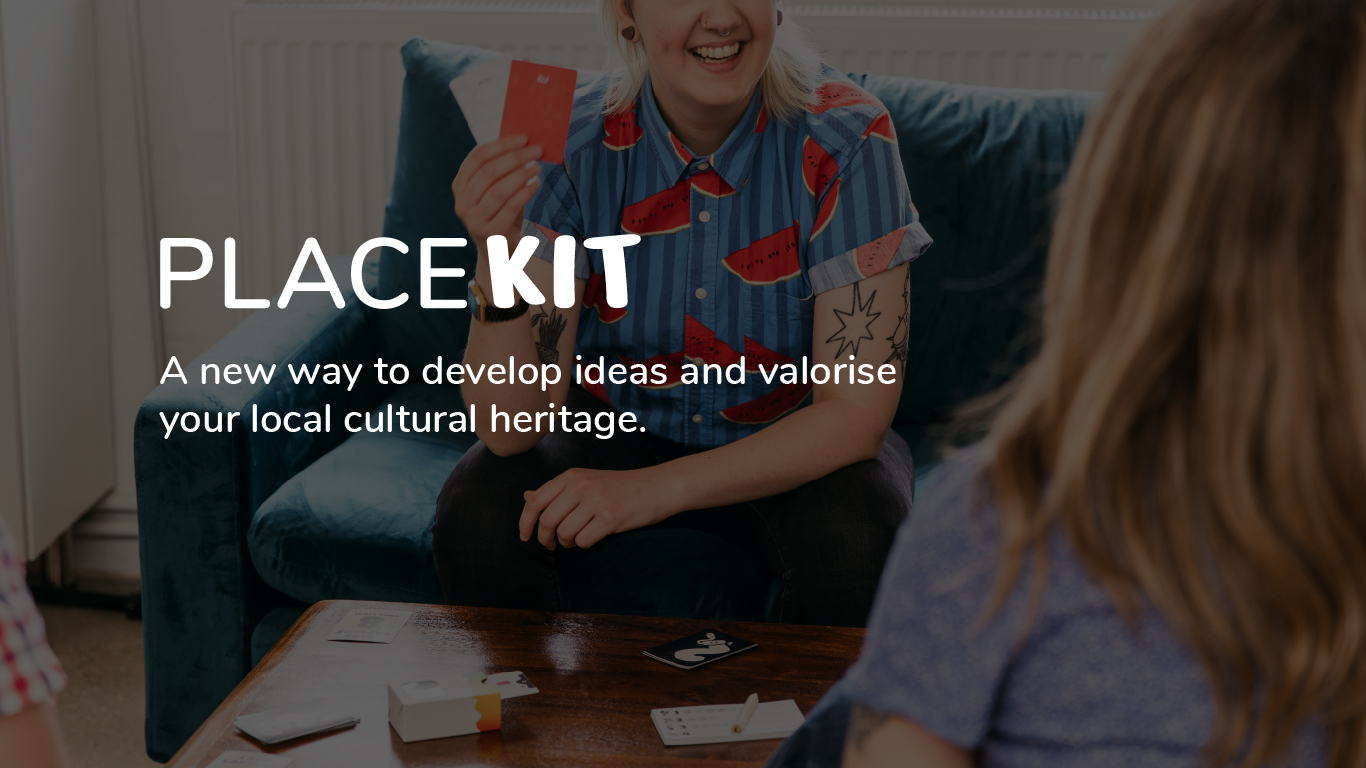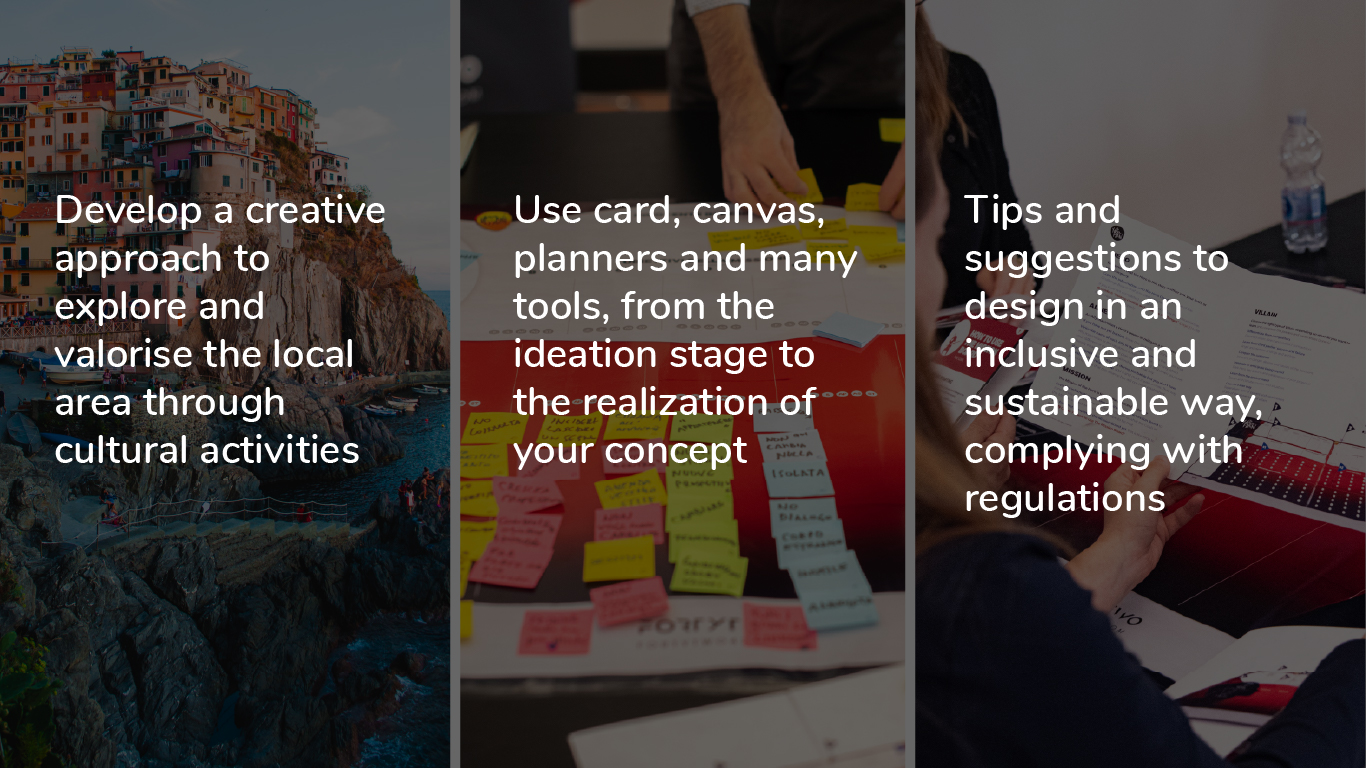placeKIT
Basic information
Project Title
Full project title
Category
Project Description
PlaceKit is a project that addresses to anyone who wants to take action to valorise their local cultural heritage and doesn't possess the skills to do this.
It is a new creative approach based on a toolkit that guides the user through the process of ideation and realization thanks to numerous tips and suggestions to design in an inclusive and sustainable way. Making it possible for anyone to design in a creative, cooperative and playful way.
Geographical Scope
Project Region
Urban or rural issues
Physical or other transformations
EU Programme or fund
Which funds
Description of the project
Summary
The project to be developed holds in consideration the construction objective of a more sustainable future. Development of the project will highlight and take into account all the rules of conduct aimed at respect for the environment and circularity some materials. The future event and / or activity will have to adhere to the following guidelines: -Reduction of production impacts in case it is necessary for the realization of the event -The kit must be open source and usable both digitally and in paper form, therefore printable in different formats -Consider the 0 km theme and integrate it with the presence of local businesses -Adopting sustainable behaviors during the fruition of the event, such as the use of the "returnable vacuum" and practice of separate collection -Organization of transport in optics of environmental sustainability, for example considering shared transport - Maximize the use of the resources of the territory from a systemic and economic point of view circular, bringing both benefits to the environment than to the community.
The project also wants to be coherent with the objectives of the UN Agenda 2030, in particular with Objective 11 "Make inclusive cities and human settlements, safe, long-lasting and sustainable: 11.4 Enhance efforts to protect e safeguard the cultural heritage e natural world 11.6 By 2030, reduce the impact negative environmental per capita of cities, paying particular attention to the air quality and waste management municipal and other waste.
Key objectives for sustainability
The project which wil be developed holds in consideration the building of a sustainable future. The development of the project will highlight and take into account all the rules of conduct aimed at respect for the environment and circularity in the use of materials. The activities or events that will be taken place with the kit will have to adhere to the following guidelines:
-Reduction of production impacts in case it is necessary for the realization of the event
-The kit must be open source and usable both digitally and in paper form, therefore printable in different formats
-It's necessary to consider the 0 km theme and integrate it with the presence of local businesses
-Adopting sustainable behaviors during the fruition of the event, such as the use of the "returnable vacuum" and practice of separate collection
-Organization of transport in optics of environmental sustainability, for example considering shared transport
-Maximize the use of the resources of the territory from a systemic and economic point of view, bringing both benefits to the environment than to the community.
The project also wants to be coherent with the objectives of the UN Agenda 2030, in particular with Objective 11 "Make inclusive cities and human settlements, safe, long-lasting and sustainable:
-11.4 Enhance efforts to protect e safeguard the cultural heritage e natural world
-11.6 By 2030, reduce the impact negative environmental per capita of cities, paying particular attention to the air quality and waste management
Key objectives for aesthetics and quality
The target of this concept is people who don’t have any skill in the social area but want to take action to valorise their local cultural heritage.
Specifically we address to schools, cultural associations but also to any individual or young student that want to become active in the social sphere.
Through different tools offered by the toolkit, the final user will be involved in all the phases of the planning: from the first ideation to the management and then the realization.
Thanks to the support of Design Thinking he will be guided through the process, paying attention to the inclusive and sustainable aspect with the support of numerous tips and suggestions, making it possible to comply with the regulations.
The final version of the kit will be developed in a multidisciplinary context, composed of numerous professionals working in different sectors, such as management, sustainability, promotion of the territory, UX, training , social psychology, marketing and communication in order to offer a complete service, able to simplify working in certain contexts.
Key objectives for inclusion
The kit for the planning of activities/events is born with the intention of addressing the widest target possible: it can be used in schools to bring students closer to different creative approaches, in local associations interested in promoting the territory, in municipal administrations, in self-managed groups united by interests and passions and so on. The kit therefore moves from the desire to make members of the same community/social group communicate in order to conclude a shared project that arises from the territory for the territory.
The project aims to direct users to experience co-design in a collective form, to educate to listening and to integrate ideas and opinions from other points of view, thus promoting inclusiveness and accessibility. A participation as extensive and collaborative as possible becomes central and necessary for the realization of the project, to ensure that this characteristic is then reflected in the realization and communication of the event / activity.
Both the conception of the kit and the ensuing activity/event must respect the principles of accessibility and be usable by anyone, precisely for the very reason from which it was born: an activity or event that promotes the enhancement of a territory the more is inclusive the more it will fully express the essence and the cultural life of a place. Diversity becomes not only a prerequisite for the creation of cultural activities, but also the necessary consequence for the community to be cohesive and reduce social, economic and gender differences.
Also in this case the project aims to be coherent with the objectives of the UN 2030 Agenda, in particular with Goal 10 "Reduce inequality within and between Nations" and Goal 5 "Achieve gender equality and empower all women and girls ".
Physical or other transformations
Innovative character
The aspects of environmental sustainability, enjoyment of the experience and inclusiveness are summarized in the possibility of the members of the same community to feel their cultural identity recognized, making it public and usable both by the members themselves and by outsiders. Furthermore, users have the opportunity to experience a design context (organization of activities and events) even though they are not experts in the field and put themselves to the test in a totally unknown context, but always with the aim of highlighting the culture of the territory and your own experience. Moreover, the approach of a creative method can help people who live in a certain context to become aware of stories, events and realities that were not known up to that moment, giving the possibility to observe their context with different eyes.


